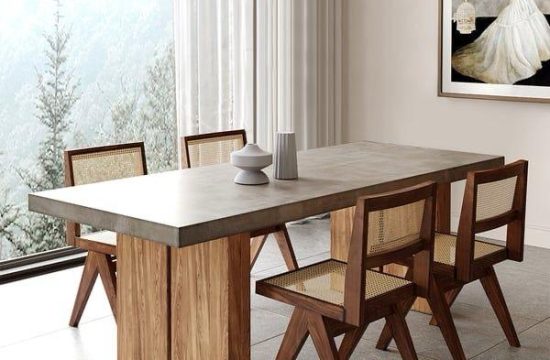By Rosemary Sadez Friedmann
Hand-painted furniture has always been considered special in one
way or another, primarily because it adds sophistication in a way that is unique.
The furniture can be whimsically treated simply with color or formally painted to create a particular look. The scenery can span the globe from tulips to chinoiserie.
Antique pieces are recognized by the hand-painting techniques used in a particular era, while contemporary painted furnishings can be a faux finish of some sort.
Understanding some of the terminology might help. Here is your decorating vocabulary lesson for the day:
Chinoiserie (pronounced shin-WAH-zeree): This is the name given to the adaptations of Asian lacquer techniques and the motifs associated with them. The scenes are usually of florals, and often have an oriental motif that can include human figures and/or landscapes.
Chinoiserie furniture and standing, four-or-more-panel screens combine very well with 18th century styles, especially Chippendale; also with simple, contemporary and eclectic rooms. The pieces so painted are wonderful accents.
Colorwashing: This is a glazing technique that involves a slow-drying process with a transparent topcoat on a colored base. As the piece is being painted, the top layer of paint is wiped off slightly every so often during the process to give it that “washed” look. Color-washed furniture looks good in casual rooms.
Faux: The French word means false or fake. The resulting painted work resembles things such as marble, stone, bamboo and the like. Depending on the quality of the faux finish and the finished look, this furniture can take center stage in a formal living room.
Incising: This is sometimes confused with faux painting and also with colorwashing. It is actually a decorative finish that is accomplished while the still-wet topcoat of paint is removed with the end of a brush to reveal the base coat. It is a very interesting look when completed, particularly if the base coat and topcoat colors are well coordinated.
This type of painted furniture can fit into almost any setting.
Trompe l’oeil (pronounced tromp loy): These French words can be translated as to “deceive the eye.” This type of painting creates a realistic illusion of a scene through the use of perspective drawing and shadows, giving the flat surface an illusion of dimension.
Patina: Patina is a natural aging finish, or one painted to look as if it has aged. In nature, it is the result of fading, discoloration, crackling and wax and dust build-up. A brand new piece of furniture can be painted to have a patina finish.
Why take a new piece of furniture and make it look old, discolored and dirty? It looks good and makes the piece seem like an heirloom.
There are many methods and many more resulting artistic looks that can be applied to furniture.
Whether buying an old piece or painting a new one, the resulting look in the room where the furniture is placed will certainly be a pleasing eye-catcher.
Rosemary Sadez Friedmann, an interior designer in Naples, Fla., is author of “Mystery of Color,” available at Barnes & Noble Booksellers and Amazon.com.












